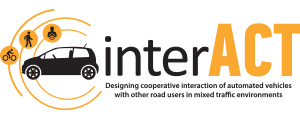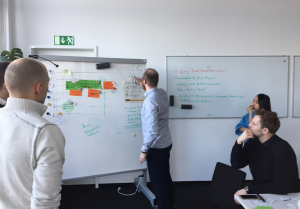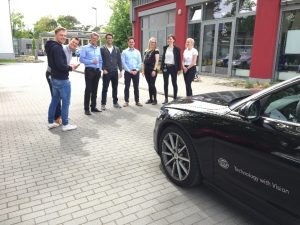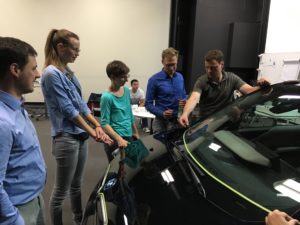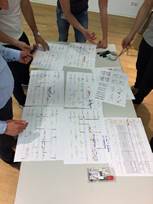Developing expectation-conforming interaction strategies for automated vehicles
The interACT project aims to develop overall interaction strategies to control the interaction between the AV and the on-board user as well as between the AV and other TPs in the surrounding. During the last months we had several discussions within the WP 4 design team to come up with the preliminary interaction strategies for the interact must-have use cases. These are documented in Deliverable D1.1.. The interaction strategies include the first answers to the main question of what messages should be transferred and are significantly influenced by the results on the Human Road User observation of WP 2. After two design workshops and several phone conferences, we came up with three different design variants; these are the perception-signalling design, the intention-signalling design and a combination of those two. Those are documented in Deliverable D4.1 .The information can be transferred either by existing or new external and on-board HMI elements as well as by vehicle movements.
The preliminary interaction strategies set the framework for further design work in which we will work on the concrete internal and external HMI design, the design of the vehicle movements and the prototype development to find out how messages should be transferred. There are several options on how to transfer information on HMI components such as visual text messages, light patterns etc. This is why we analyse both the advantages and disadvantages of technological solutions in a user-centered design process and decide which technologies are the most promising for the interACT project. Further, we include different and more complex scenarios into the design of the interaction strategies and transfer these strategies on a more abstract level to make them applicable to a larger number of scenarios.

